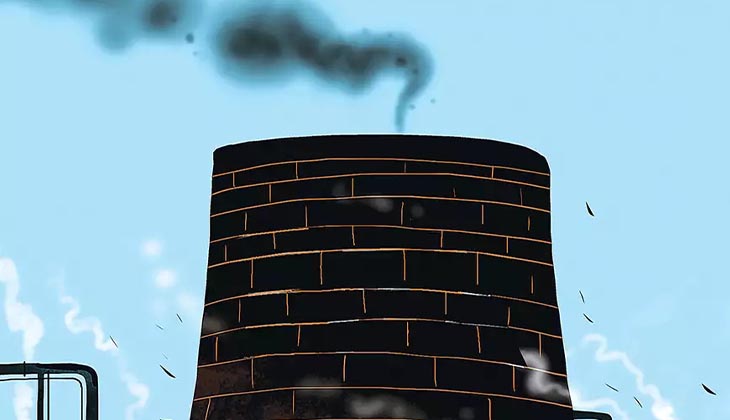This article originally appeared in the Times of India.
Transition from fossil fuels in India is a matter of politics, communities, federalism & jobs

The latest IPCC report paints a grim picture of the future if the world fails to eliminate the use of fossil fuels over the next three decades. India will be disproportionately impacted by extreme weather events. Therefore, the only question in front of us is how best to plan this transition to secure a just and equitable outcome. Otherwise, chaos and disruptions are a foregone conclusion.
Note here that there is a stark asymmetry in India’s energy map. While 85% of coal production is concentrated in relatively poor eastern and central states of Jharkhand, Odisha, Chhattisgarh, West Bengal and Madhya Pradesh, over 60% of renewable energy potential (and 80% of current capacity) is concentrated in relatively wealthy southern and western states – Gujarat, Maharashtra, Rajasthan, Andhra Pradesh, Karnataka, Tamil Nadu and Telangana.
As India and the rest of the world embark on the most significant energy shift since the invention of steam engines to combat the climate crisis, this disparity raises many questions. For example:
- How will the energy transition affect inter-state relations? What implications will it have on government revenue, public expenditure and regional inequality?
- What happens to districts like Dhanbad, Singrauli, Korba, Angul, or Paschim Bardhaman, where coal is the fulcrum of jobs and growth?
- How will we re-skill and re-employ millions of workers formally and informally employed in fossil fuel-dependent industries like thermal power, steel, cement, refineries, automobile, petrol pumps, or urea fertiliser?
These aren’t hypothetical questions to be debated through a future lens. These are, on the contrary, current concerns that must be addressed immediately, as coal and oil use will have to decline dramatically over the next 2-3 decades to avoid the worst impacts of global warming.
The good news is that this rapid transition is technologically feasible, and the market is now willing and ready to switch to non-fossil alternatives in many industries since they are profitable. Hence, all major Indian companies, from Tata’s to Reliance and Adani’s to Mahindra’s, are putting billions of dollars in renewable energy, battery storage and EVs.
However, if the transition away from coal (and oil) is not well-managed, many of the country’s disadvantaged districts will be pushed even further into poverty. Furthermore, it will have serious ramifications for the political economy in central and eastern India, where coal is firmly embedded in local culture and politics. Their politics can even put a brake on the energy transition itself.
Therefore, the energy transition is more than technological fixes and investments; it is also about workers and communities who will be affected. To get this transition right, we will have to start developing policies and plans for a Just Transition and not merely an energy transition. A well-planned Just Transition will help districts and states dependent on fossil fuels to diversify their economy and secure decent work opportunities for their population.
But what does a Just Transition look like in India? What is it going to entail? To answer, we must first comprehend the nature of the fossil fuel economy as well as the obstacles of phasing it out.
To begin with, the Indian fossil fuel industry, particularly coal, is plagued by the “resource curse” and informal workers. Most coal areas are impoverished and polluted, with more than half of the population suffering from multidimensional poverty. In addition, the informal workforce is approximately four times the formal employees. As a result, a vast majority of workers don’t have employment security.
Secondly, the fossil fuel industry has a large footprint. There are 120 districts in which these businesses play a significant role. Of these, 60 districts account for 95% of coal production, 60% thermal power capacity, and 90% automobile and automobile component manufacturing. Disruptions will occur in these districts early on, perhaps within the next five years, as alternative technologies are already in the market for these sectors.
Thirdly, the industry employs a large number of people, with at least 20 million people working in mines and factories. Automobile, iron and steel, and coal mining are the biggest employers. To put things in perspective, the coal-mining sector in the United States employed 54,000 people in 2019; in India, the figure is over 2.0 million.
Finally, the fossil fuel industries contribute significantly to the exchequer. Taxes on coal, oil and gas contributed 18.8% of the total revenue receipts of the central government and about 8.3% of the state governments in 2019-20. Thus, these taxes are essential for the government’s revenue and spending.
Considering the above, a Just Transition in India will need policy and planning for five key elements (the five R’s):
- Restructuring of the economy and industries in fossil fuel-dependent districts/ states;
- Repurposing of land and infrastructure, as these industries hold vast land and assets. For example, coal mines and thermal power plants alone have 0.3 million hectares of land, which can be repurposed to build a new green economy;
- Reskilling existing and skilling new workforce to avoid job loss and create a new workforce for the green industries;
- Revenue substitution and investments in Just Transition. This will require progressively moving taxes away from fossils and using fossil taxes like GST compensation cess (formerly coal cess) and District Mineral Foundation funds for Just Transition; and,
- Responsible social and environmental practices during the transition process to create a better world than today.
Phase-out of fossil fuels is imminent; we have no choice.
Chandra Bhushan is one of India’s foremost public policy experts and the founder-CEO of International Forum for Environment, Sustainability & Technology (iFOREST).
